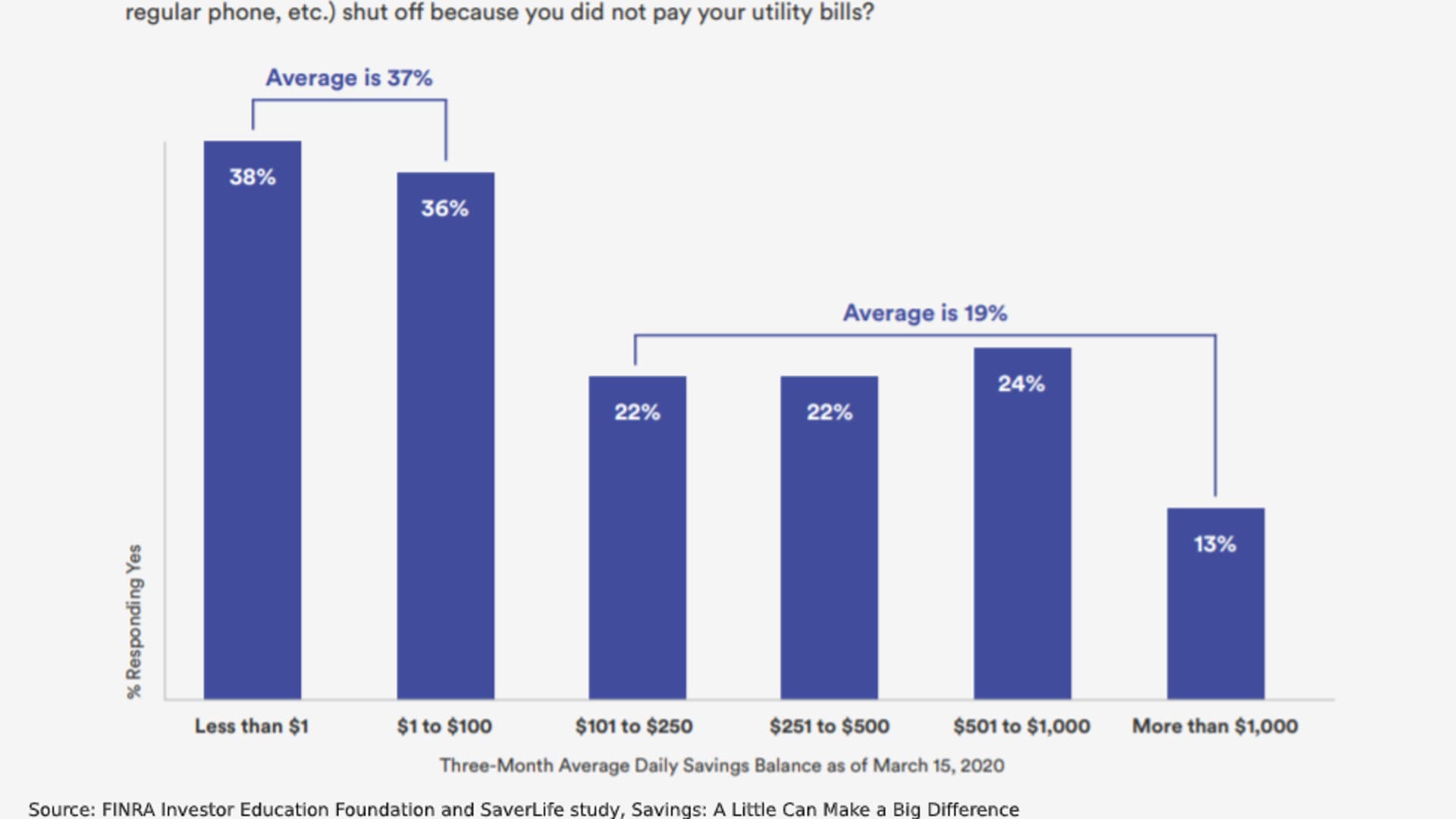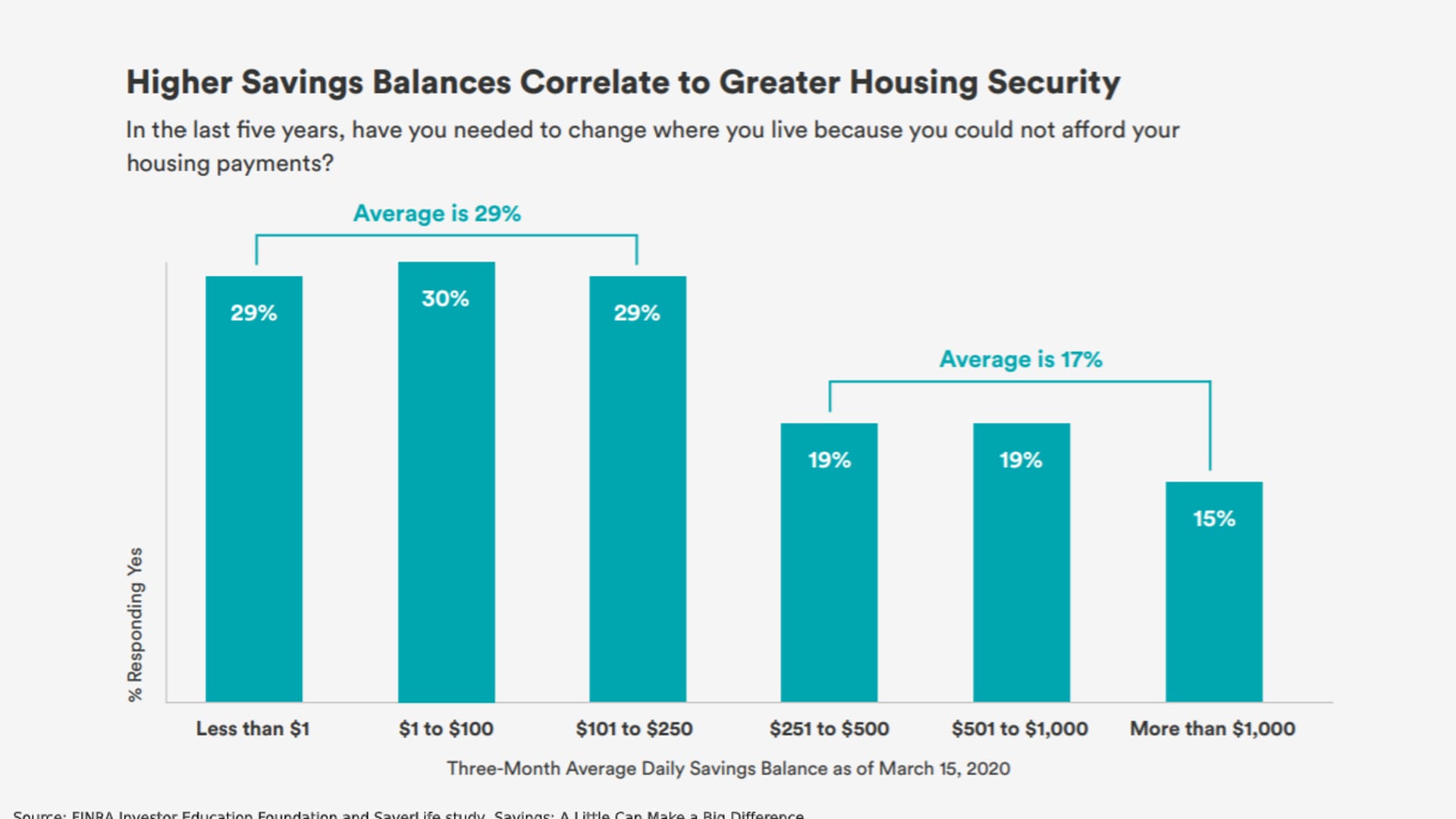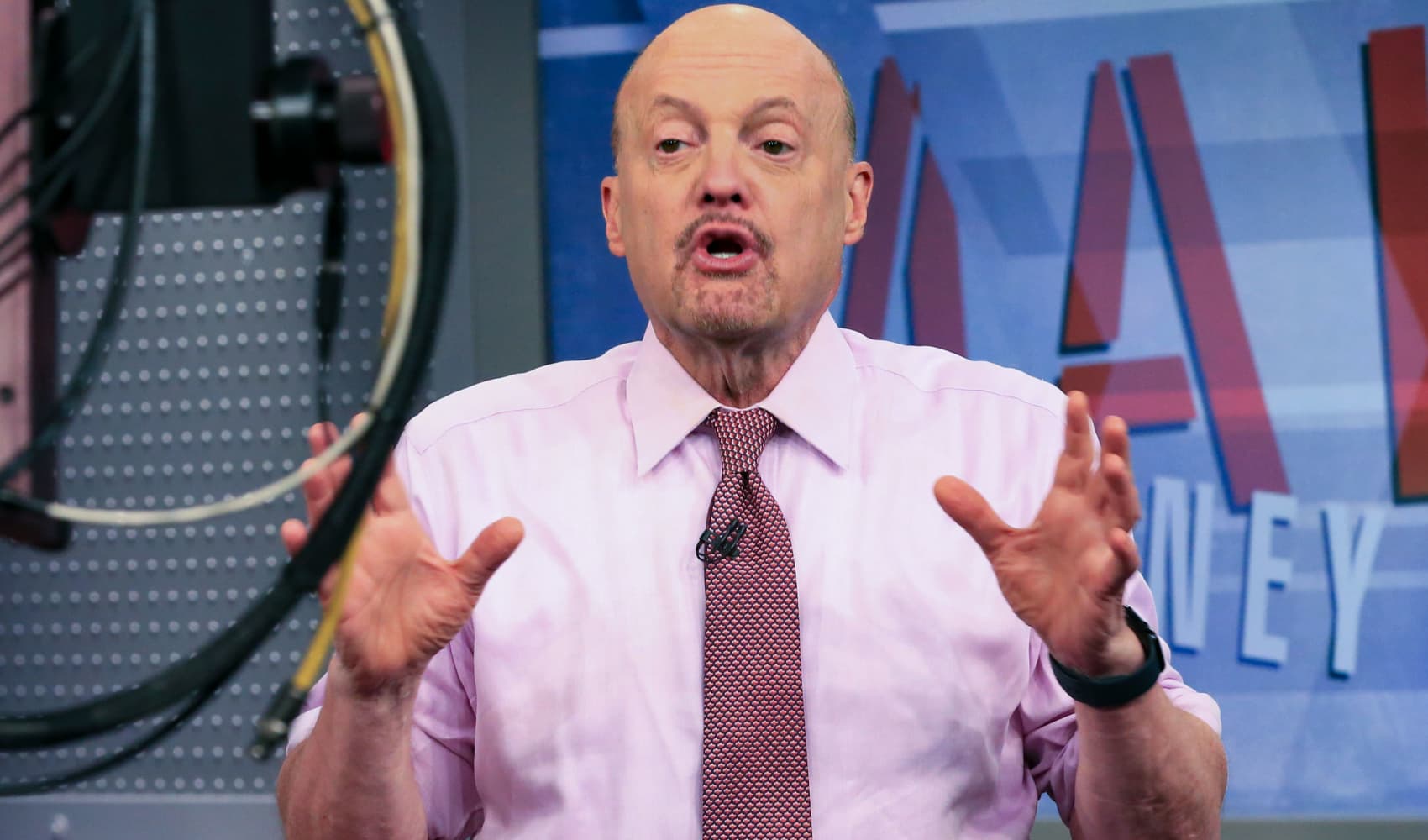
Most financial experts recommend having the equivalent of three to six months of living expenses tucked away in a savings account for emergencies.
That's good advice. But even having a smaller savings fund can help you avoid going into debt or losing basic amenities such as utilities and even housing, according to a new study released Thursday by the FINRA Investor Education Foundation and nonprofit SaverLife.
Having just $100 in savings
The study — which evaluated 687 U.S. adults with money in their savings account on a daily basis over the course of three months — found that having at least $100 in savings reduces the likelihood of having your utilities shut off, as well as cuts down on the need for high-cost borrowing. Those with at least $100 in savings also have more financial satisfaction with their situation.
When it comes to utilities, an average of 37% of those who had their electricity, gas or water shut off in the last five years had less than $100 in savings. Meanwhile, only 19% of those with $100 or more in savings similarly reported having their utilities shut off due to nonpayment.

Even when the study controlled for differences including income, gender, age, marital status and education, those with less than $100 in savings were 42% more likely to experience issues paying their bills and, ultimately, having their utilities shut off.
Money Report
Not only does having $100 in savings reduce the likelihood that Americans will go without utilities, it also cuts down on the need for high-interest credit options such as auto title loans, payday loans, refund advances, rent-to-own stores and pawn shops.
About 42%, on average, of those with less than $100 in the bank reported borrowing from one of these high-cost lenders in the last year. That's compared to just 23% of those with at least $100 in savings.
Having $250 in savings
For those who are able to tuck a little more away, about $250, that level of savings can actually help keep people in their homes, the study found.
Nearly a third, 29%, of the study participants with less than $250 in savings reported that they needed to move out of their homes because they couldn't afford their rent or mortgage payments at least once in the past five years. In contrast, only 17% of those with over $250 in savings were forced to move because they couldn't pay for their housing.

If you're looking to build up your own emergency savings, experts recommend making it as easy as possible. Set up a regular, automatic transfer from your checking account to a savings account, preferably a high-yield option that will likely pay you a better interest rate than a brick-and-mortar bank. These transfers don't have to be a lot, maybe $5 a day or even $5 a week, says Farnoosh Torabi, personal finance author and host of the "So Money" podcast.
You can also download an app to do the work for you. Apps like Digit ($5 per month) and Albert (free to use the Smart Savings tool) will automatically calculate when you have money in your checking account that can be safely siphoned into savings before you spend it.
The key is to have any extra money you might have in your checking account leave your hands before you get a chance to spend it, Torabi says. "Over the course of six months, a year or even just a little bit of saving at a time... [it] will accumulate and it will motivate you to do more."
Check out: Covid-19 pandemic is the first time 40% of Americans have experienced food insecurity
Don't miss: Amex Blue Cash Preferred is offering an elevated welcome bonus for a limited time






